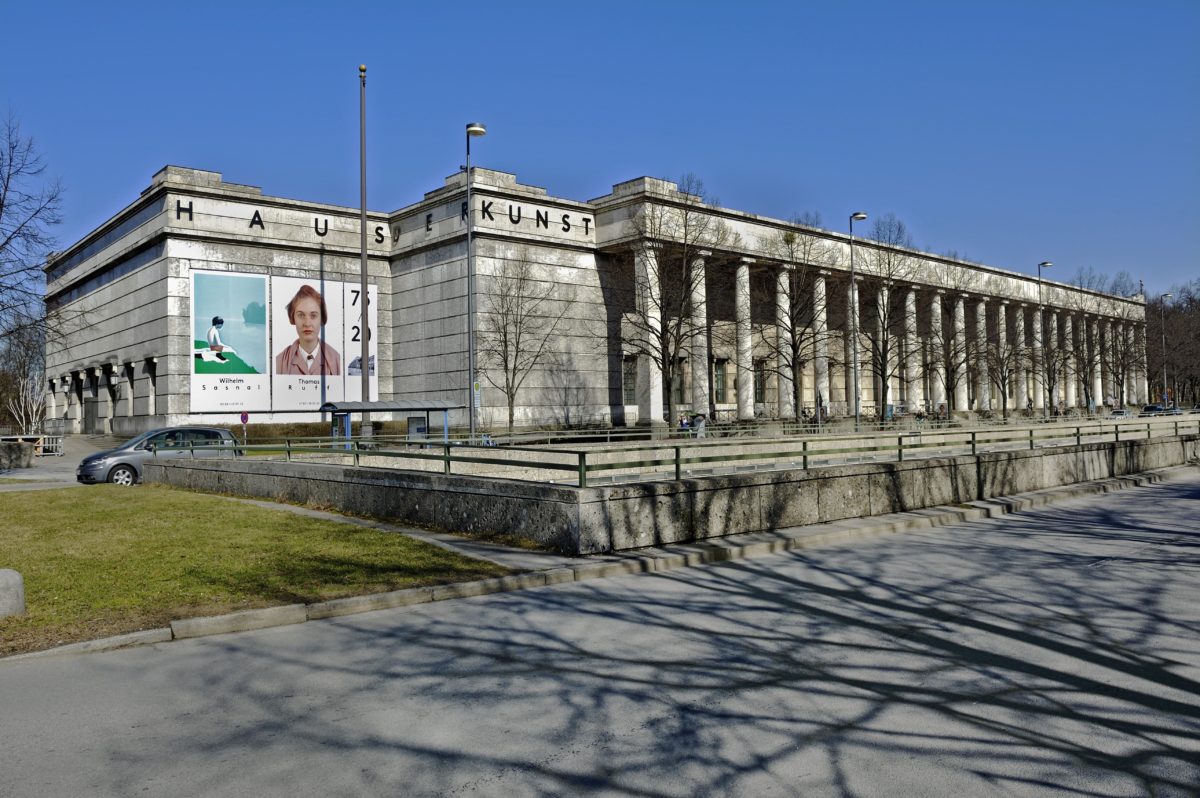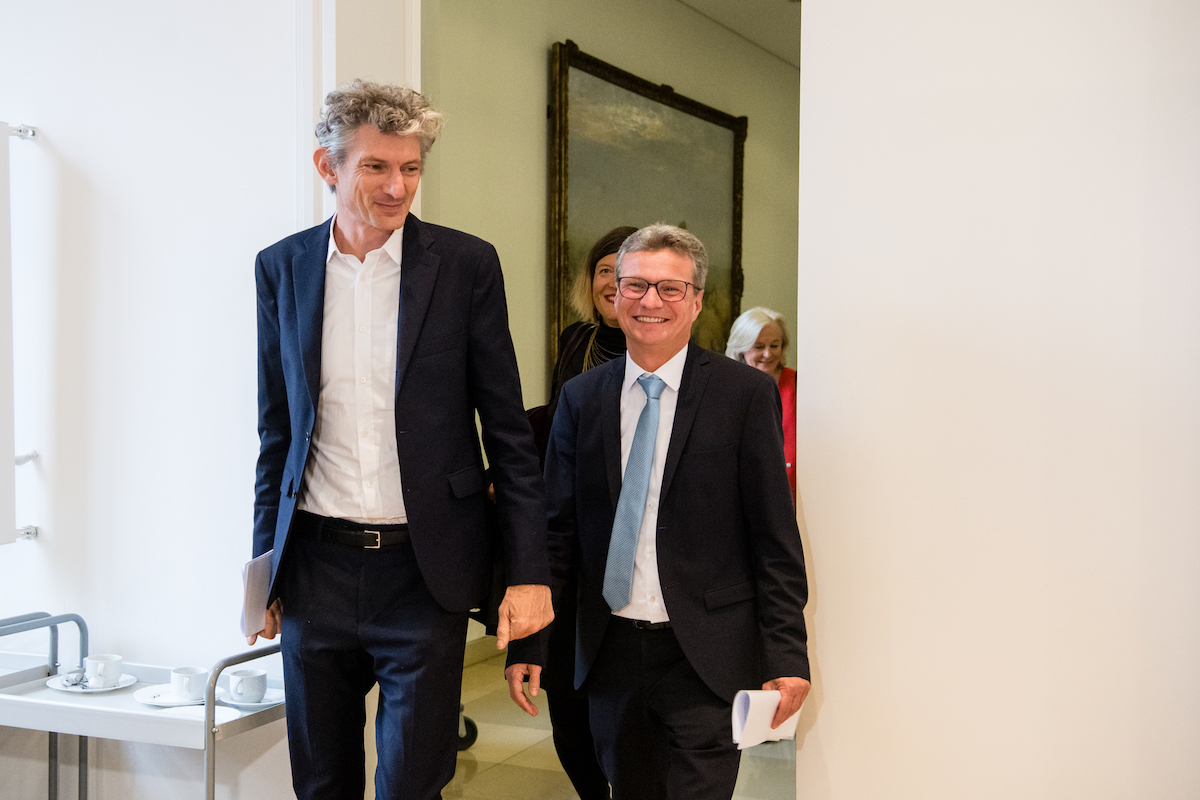[ad_1]

Haus der Kunst.
MANFRED BAIL/IMAGEBROKER/SHUTTERSTOCK
Tuesday brought news that the Haus der Kunst in Munich finally has a new artistic director: Andrea Lissoni, the current senior curator of international art for film at Tate Modern in London and the former director of the HangarBicocca art space in Milan. In April 2020, Lissoni will take up the position at the Haus der Kunst left vacant since summer 2018, when Okwui Enwezor departed for health reasons.
Enwezor, who died in March at age 55, was widely regarded as one of the most important curators and thinkers in today’s art world. Since his departure, the Munich museum has seemed rudderless, drifting among crises that began with allegations of underfunding, financial mismanagement, sexual harassment, and the infiltration of the museum’s upper ranks by Scientologists, and soon erupted into accusations of cultural nativism. In September, artist Ai Weiwei led a solidarity action in protest of the museum’s plan to lay off two-thirds of its workers; it culminated in a confrontation with the gallery’s commercial director, which was broadcast online.
The question now is whether Lissoni can move the museum beyond the controversies that have left the Haus der Kunst in a state of turmoil.
“Dr. Lissoni has a very imposing legacy to live up to,” Adrian Piper, an artist whose planned retrospective at the museum was called off amid upheaval in 2018, told ARTnews. “Okwui Enwezor [searched] for high-quality, cutting-edge art in every culture, every country, every community, and every artist’s studio, regardless of gender, so-called ‘race,’ ethnicity, geographical location, or art world connections.”
Speaking to ARTnews, Lissoni stressed a desire “to keep the institution connected to emergent and non-conventional practices,” opening his program to artists engaged with questions of gender, identity, and freedom of expression. “I am very concerned to look beyond what’s commercially available and beyond the mainstream,” he said.
Lissoni’s record is indicative of such a mandate. At Tate, working with curator Catherine Wood, he embraced emerging talents like Chinese noise artist Pan Daijing and curated blockbuster Joan Jonas and Philippe Parreno shows. Among the works he has screened at Tate are Raving Riot, a film by 25-year-old Georgian filmmaker Stepan Polivanov about a May 2018 revolt in Tbilisi, Georgia, which has been described as the first revolution driven by techno music, as well as Empty Metal by artists Adam Khalil and Bayley Sweitzer, which follows a Rastafarian computer hacker and a Buddhist hermit on their path toward revolutionary action.
Such internationalism that has long formed a cornerstone of Haus der Kunst’s programming but, in the wake of a series of scandals, that interest in writing globalist art history has been under threat. Following Enwezor’s departure, the museum was left in the hands of a newly appointed commercial director, Bernhard Spies—a financial crisis manager brought in from the Kunsthalle Bonn in Germany. With the museum bleeding money, Spies canceled major Joan Jonas and Piper retrospectives in 2018, and replaced them with solo shows by two male, German painters, Jörg Immendorff and Markus Lüpertz. (That both are represented by the same gallery, Michael Werner, raised eyebrows.) “I feel robbed of the opportunity to bring a different perspective into these ongoing discussions [in Germany],” Piper told Artnet News at the time.

Andrea Lissoni and Bernd Sibler.
STMWK/MATTHIAS BALK
When Enwezor was hired in 2011, his appointment was viewed as a coup for the Haus der Kunst, whose budget is modest by international standards. However, the formation of the far-right Alternative für Deutschland (AfD) in 2013 changed the political landscape in Germany, normalizing nationalist positions in the country. In this context, some became suspicious of the circumstances of Enwezor’s departure and raised concerns about cultural nativism. Local press published dog-whistle op-eds saying that Enwezor’s successor should speak German. Some outlets even suggested that Enwezor was responsible for the Haus der Kunst’s many scandals, which, the curator said, were rooted in decisions that preceded his tenure. His retirement was due not only to illness, but to feeling “no longer wanted,” Enwezor told Der Spiegel. “As the director of such an institution, you need not only financial but also moral support. All that was missing, even just acknowledgment, encouragement, assistance.”
Following this ugly episode, the Haus der Kunst now has an opportunity to hit hard reset. In appointing Lissoni, it has signaled an ongoing commitment to internationalism, written into its identity by successive artistic directors since 1992. Enwezor, in particular, joined the Haus der Kunst as a curator who had made his name fashioning a truly global contemporary art discourse. His 2016 exhibition “Postwar: Art Between the Pacific and the Atlantic, 1945–1965,” was summative of a career devoted to reconstituting modern and contemporary art histories to include, on their own terms, figures from Africa, Oceania, Asia, and others historically excluded from those narratives.
Bernd Sibler, the Bavarian culture minister, told ARTnews that Lissoni’s mission at the Haus der Kunst is to spotlight “Bavarian as well as international art.” Lissoni, a specialist in global art and moving-image work, told ARTnews that this mission will be informed by the region’s strong heritage of experimental filmmaking, especially at the University of Television and Film (HFF) Munich, which was attended by Harun Farocki and Hito Steyerl. Lissoni used the metaphor of broadcasting to explain his vision for the Haus der Kunst to act as a “transmitter,” emitting a “signal” that connects fine art academies and research institutions throughout the region. “The aim is to organically develop a creative and intellectual scene that already exists but needs to cultivated,” he explained, citing methods he developed as a cofounder of the social network and project space Xing while running the countercultural Netmage arts festival in Bologna from 1997 to 2012.
Lissoni sees his job as finding ways to resolve tensions between global and local demands. “We are in a terrible, but also incredibly exciting, moment in which art can be used as a means to reconsider history,” he said. At the Haus der Kunst, which was first built in 1937 in the Third Reich as a temple to national art, the historical resonances are obvious—but Lissoni is clearly paying tribute to the revisionist art histories that constituted Enwezor’s life’s work. Like Enwezor, Lissoni is a foreigner with an eye toward the world at large. He is a progressive, an Italian for whom German is a second native language, and one who is also fluent in English and French. In him, the Haus der Kunst may have discovered Enwezor’s worthy successor.
The Bavarian government, meanwhile, appears to have found someone sensitive to the region’s desire to act as a producer of artistic significance as well as a receiving house for it. Lissoni seems to be a good listener. He will need to be. David Chipperfield’s long-planned renovations of the building have been fraught with delay and controversy, while opposition parties have vowed to fight the gallery’s controversial proposals to eliminate or outsource workers. The Greens—Bavaria’s main opposition party—have gone furthest, demanding a public consultation on the future of the Haus der Kunst and recommending full public ownership. The extent to which Lissoni is able to negotiate these competing political demands, while realizing his own ambitious artistic program, will determine his success.
Piper told ARTnews, “The question in my mind is whether Dr. Lissoni is capable of carrying on [Enwezor’s] fight, or whether he will surrender to the inevitable Euro-ethnic pressures to retreat to a safety zone that no longer exists. I am sure we will all watch his tenure at the Haus der Kunst with great interest.”
[ad_2]
Source link

